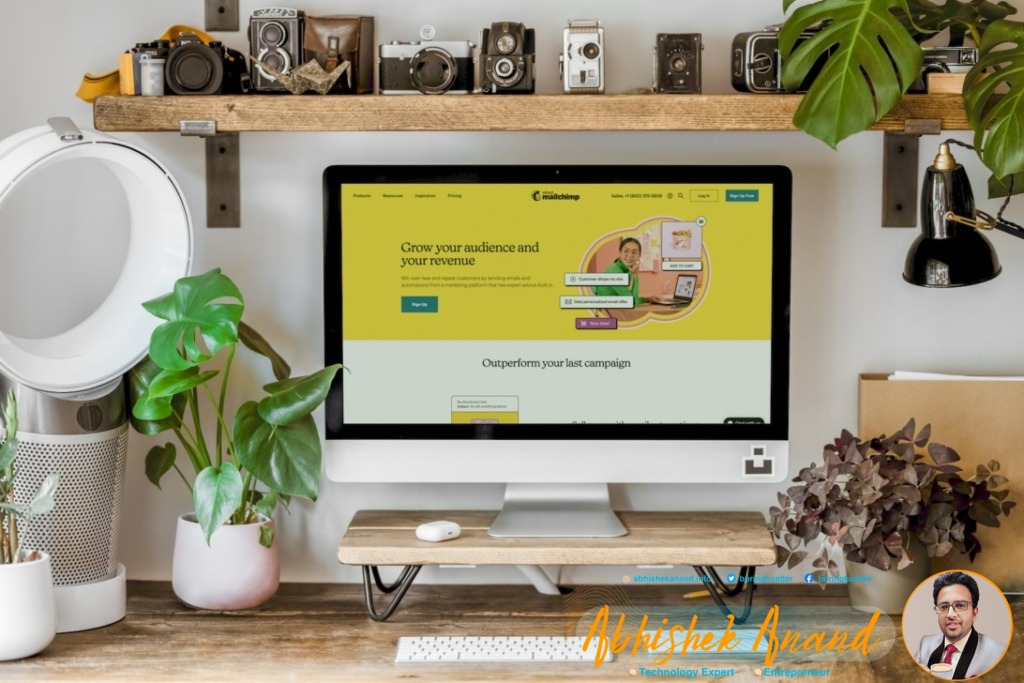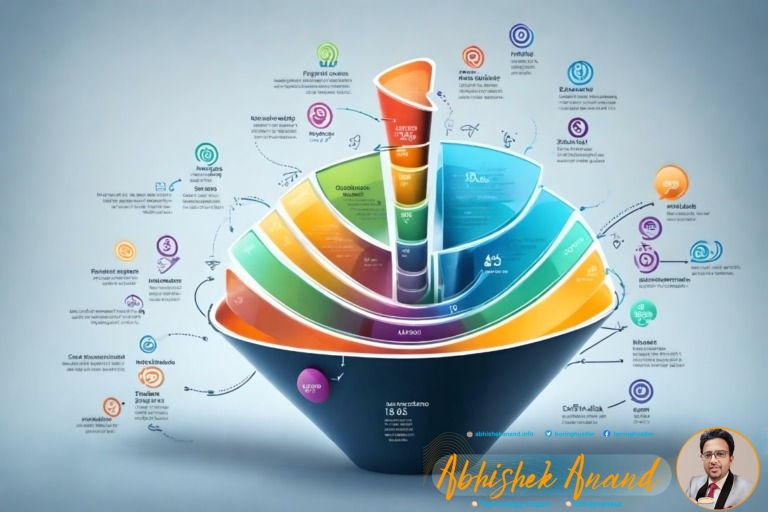The SaaS industry has witnessed exponential growth in recent years, with the global market expected to reach $307.3 billion by 2026. Given the competitive landscape of this market, it is crucial for SaaS companies to have an efficient acquisition funnel that enables them to attract and retain customers. However, achieving sustainable growth requires more than just driving traffic and generating leads; it involves optimizing each stage of the acquisition funnel.
This article aims to provide a comprehensive guide on how SaaS companies can unlock their acquisition funnel’s potential through efficient growth strategies. It will explore various techniques such as reducing churn, improving customer lifetime value, leveraging data and analytics, offering free trials and demos, providing excellent onboarding experiences, prioritizing customer feedback, and continuously testing and iterating. By implementing these strategies effectively, SaaS companies can increase conversion rates at each stage of their acquisition funnel while building a loyal customer base that contributes significantly to their long-term success.
Understanding Your SaaS Acquisition Funnel
The comprehension of the SaaS acquisition funnel is a crucial aspect for businesses seeking to optimize their growth strategy through data-driven decision-making and targeted marketing efforts. Analyzing metrics is one of the essential aspects of understanding your acquisition funnel. This includes tracking conversion rates at each stage of the funnel, identifying any bottlenecks, and determining which channels are most effective in driving traffic.
Targeting audiences is another critical component of understanding your acquisition funnel. By segmenting your target audience based on demographics, behavior, or other characteristics, you can tailor your messaging and marketing efforts accordingly. This allows you to create more relevant content that resonates with potential customers and increases the likelihood that they will convert.
Developing strategies and tracking progress are also vital when it comes to optimizing your SaaS acquisition funnel. Strategies should be designed based on an analysis of data gathered from metrics analyzed over time. Tracking progress helps evaluate how well these strategies work over time by analyzing a range of performance indicators such as revenue generated per visitor or customer lifetime value. Overall, developing an understanding of your SaaS acquisition funnel requires a strategic approach that leverages data insights to improve outcomes continually.

Optimizing Your Acquisition Funnel
In order to achieve efficient growth and unlock the full potential of your SaaS acquisition funnel, it is crucial to identify and address any bottlenecks that may be hindering its performance. By analyzing data from each stage of the funnel, you can pinpoint areas where users are dropping off or experiencing friction in their journey towards conversion. From there, strategic improvements can be made to optimize conversion rates and increase overall efficiency of the acquisition funnel.
Identifying and addressing bottlenecks
Identifying and addressing bottlenecks requires a systematic approach that enables Saas companies to optimize their acquisition funnel for maximum efficiency, which can lead to significant growth opportunities. Identifying bottlenecks involves identifying the common causes of delays or obstacles in the acquisition funnel and devising solutions to address them. Common causes include high bounce rates, low click-through rates, slow loading times, poor user experience design, insufficient lead qualification processes, among others. To address these bottlenecks effectively, Saas companies should adopt best practices such as conducting regular audits of the acquisition funnel performance metrics, collecting feedback from users about their experiences with the product or service, collaborating cross-functionally across departments to identify issues and devise solutions quickly.
Addressing bottlenecks also entails analyzing real-world case studies of successful Saas companies that have optimized their acquisition funnels and achieved substantial growth. For instance, Slack optimized its onboarding process by simplifying its signup form and reducing the number of steps required to create an account. This helped increase its conversion rate by 10%. Another example is Salesforce’s use of personalized email campaigns that targeted specific customer segments based on their behavior patterns and preferences. This led to a 29% increase in qualified leads generated from inbound marketing efforts. By identifying and addressing bottlenecks using a data-driven approach and best practices learned from industry leaders’ case studies, Saas companies can improve their acquisition funnels’ performance significantly without compromising quality or customer satisfaction.
Improving conversion rates requires a deep understanding of how users interact with your product or service at every stage of the acquisition funnel.
Improving conversion rates
Maximizing conversion rates is essential for Saas companies to capitalize on growth opportunities and improve user satisfaction. A/B testing strategies are effective tools that allow companies to measure the effectiveness of different variations in design, messaging, and other factors that influence conversions. By implementing A/B tests, Saas companies can identify the elements of their website or application that drive conversions and optimize them accordingly.
Persuasive copywriting techniques can also play a crucial role in improving conversion rates. Companies must create compelling content that speaks directly to their target audience’s needs and pain points while highlighting the unique value proposition of their product or service. This requires careful research into customer demographics, market trends, and competitor analysis, among other factors. By combining data-driven insights with persuasive copywriting techniques, Saas companies can increase conversion rates and improve overall revenue growth.
By focusing on improving conversion rates through A/B testing strategies and persuasive copywriting techniques, Saas companies can unlock significant growth opportunities. However, reducing churn is also an equally important aspect of optimizing acquisition funnels.
Reducing Churn
Mitigating customer churn requires a systematic approach that examines the underlying causes of customer dissatisfaction and identifies effective strategies to address them. Strategies for retention involve analyzing customer behavior, identifying patterns, and addressing issues before they become reasons for customers to leave. One way to do this is by monitoring key performance indicators (KPIs) such as usage rates, product feedback, and customer support interactions.
Reducing churn also involves providing excellent customer service that goes above and beyond what customers expect. This means responding promptly to inquiries or complaints, offering personalized solutions, and making it easy for customers to cancel if they need to without causing frustration or inconvenience. Another strategy is offering incentives such as discounts or exclusive content to loyal customers who have been with the company for a certain period.
Incorporating these strategies can help increase customer loyalty and improve their lifetime value. By reducing churn rates, companies can retain more of their existing client base while also attracting new ones through positive word-of-mouth recommendations from satisfied customers. Improving lifetime value involves not only retaining existing clients but also upselling them on additional services or products that complement their current needs.

Improving Customer Lifetime Value
Improving customer lifetime value is a crucial aspect of business success, as it allows companies to build stronger relationships with their customers and increase revenue over time. Maximizing retention rates and nurturing customer loyalty are key elements in achieving this objective. By focusing on these areas, businesses can reduce the cost of acquiring new customers while increasing the value generated from existing ones.
To maximize retention rates, businesses need to focus on providing outstanding customer service at every touchpoint. This means delivering personalized experiences that meet each individual’s unique needs and preferences. Companies should also strive to create an emotional connection with their customers by building trust and showing appreciation for their loyalty. By doing so, they can increase the likelihood of repeat purchases and referrals.
Nurturing customer loyalty requires a long-term commitment to understanding their needs and preferences. Businesses must be willing to invest in ongoing research and analysis to identify areas where improvements can be made. They should also regularly review feedback from customers to ensure that they are meeting expectations and addressing any concerns promptly. In doing so, businesses can build strong relationships with their customers that translate into increased revenue over time.
To leverage data and analytics effectively, businesses must have a clear understanding of their objectives and how data can help them achieve those goals. By using advanced analytics tools like predictive modeling or machine learning algorithms, companies can gain valuable insights into customer behavior patterns that allow them to tailor marketing campaigns more effectively. With this approach, businesses can optimize engagement strategies across multiple channels while improving overall ROI without sacrificing quality or efficiency in the process.
Leveraging Data and Analytics
Leveraging data and analytics is a critical component of modern business strategy that allows companies to gain valuable insights into customer behavior patterns and optimize engagement strategies. Data-driven decisions are essential in today’s competitive market, where businesses must make informed choices based on reliable information to remain relevant. Implementing analytics tools enables organizations to collect, process, and analyze vast amounts of data generated by user interactions across various channels.
With the right analytics tools in place, businesses can track customer journeys from initial contact through conversion and beyond. The ability to monitor user activity provides invaluable insights into how customers engage with products or services, which helps companies identify areas for improvement. For instance, identifying friction points in the sales funnel or discovering ways to personalize marketing campaigns can lead to improved consumer experiences that ultimately drive revenue growth.
Leveraging data and analytics is a powerful way for businesses to optimize their acquisition funnel effectively. By using data-driven decision-making processes and implementing analytics tools that help them collect meaningful insights into customer behavior patterns, companies can improve engagement strategies and drive revenue growth. In the next section about building a strong brand, we will explore how businesses can use branding strategies to create an emotional connection with their customers that translates into long-term loyalty and advocacy.
Building a Strong Brand
Building a strong brand is crucial for any SaaS company to establish its unique identity and differentiate itself from competitors. Defining your brand identity involves identifying your target audience, crafting a compelling narrative that aligns with your company values and mission, and creating a visual identity that resonates with your customers. Creating a consistent brand experience across all touchpoints, both online and offline, helps build trust with customers and reinforces the values of the brand.
Defining your brand identity
Establishing a clear and distinct brand identity is crucial for the success of any SaaS company. A strong brand identity enables customers to recognize and differentiate your product from competitors in the market. To achieve this, SaaS companies need to develop a compelling brand messaging that communicates their value proposition succinctly and effectively. This messaging should be consistent across all marketing channels, including website copy, social media posts, and advertising campaigns.
Visual branding is another critical component of creating a strong brand identity for SaaS companies. It involves designing an easily recognizable logo that reflects the values of your company and aligns with your target audience’s preferences. Additionally, visual branding encompasses selecting a color palette that evokes emotions associated with your product or service and choosing typography that enhances legibility while conveying personality traits such as professionalism or playfulness. Establishing a clear brand message combined with visually appealing design helps build trust with potential customers by conveying credibility and forming emotional connections. Creating a consistent brand experience is essential to building long-term customer loyalty, which we will discuss in more detail in the subsequent section.
Creating a consistent brand experience
Consistency in brand experience is a key factor in ensuring customer satisfaction and retention for SaaS companies. It involves delivering a consistent message across all channels, from social media to customer service interactions. When customers encounter a brand that presents itself consistently, they are more likely to perceive it as reliable and trustworthy. Inconsistent messaging can lead to confusion or mistrust, which can ultimately harm the brand perception.
Creating a consistent brand experience requires careful consideration of all touchpoints along the customer journey. This includes visual elements such as logos and color schemes, but also extends to tone of voice and communication style. Companies should work towards developing a clear brand personality that resonates with their target audience and reflects their values. By doing so, they can create a cohesive story that engages customers and builds loyalty over time. Developing a content strategy plays an important role in achieving this goal by providing guidance on how to communicate effectively with customers through different channels.
Developing a Content Strategy
To craft a robust content strategy for SaaS acquisition funnel optimization, it is recommended to start by conducting in-depth research on the target audience’s preferences and pain points. This entails gathering data on the types of content that resonate with your audience, such as blog posts, videos, or social media posts. It also means understanding what motivates them to engage with your brand and what obstacles might prevent them from doing so.
Once you have gathered this information, you can begin developing a content creation plan that addresses your audience’s needs and preferences. This may involve creating educational resources such as how-to guides or webinars that help users understand how your product works or solve their pain points. Alternatively, it could mean sharing customer success stories or thought leadership pieces that position your brand as an industry expert.
Ultimately, the success of any content strategy depends on its ability to drive conversions and move prospects through the acquisition funnel. By targeting specific segments of your audience with personalized messaging and creating compelling calls-to-action (CTAs), you can encourage users to take the next step in their journey with your brand. Investing in paid advertising can further amplify these efforts by reaching new audiences and increasing visibility for high-performing pieces of content.
Investing in Paid Advertising
Investing in paid advertising can be a valuable strategy to drive growth for SaaS companies. Understanding different ad channels is key to determining where to allocate budgets and resources effectively. Creating effective ad campaigns that resonate with the target audience requires data-driven, strategic planning and execution.
Understanding different ad channels
Distinguishing between various ad channels can be likened to navigating a labyrinthine forest, requiring a deep understanding of each channel’s nuances and benefits. Ad targeting and budget allocation are two critical aspects that need to be considered when choosing an ad channel. Here are five popular ad channels, along with their unique features and benefits:
Google Ads: One of the most widely used platforms for PPC advertising, Google Ads offers extensive targeting options based on keywords and demographics.
Facebook Ads: With over 2 billion active users, Facebook is a goldmine for businesses looking to reach a wider audience. The platform offers granular targeting based on user interests, behaviors, and demographics.
LinkedIn Ads: Ideal for B2B companies, LinkedIn Ads allows advertisers to target professionals based on job title, industry, company size, etc.
Display Advertising: This involves placing banner ads on third-party websites that align with your target audience’s interests. It can help build brand awareness and drive traffic to your website.
Influencer Marketing: This involves partnering with social media influencers who have large followings in your niche. It can help you reach new audiences and boost credibility.
Understanding the nuances of different ad channels is crucial in creating effective ad campaigns that maximize ROI. In the next section, we will explore strategies for creating compelling ads that resonate with your target audience.
Creating effective ad campaigns
Having a comprehensive understanding of different ad channels is crucial in acquiring customers for your SaaS business. However, it’s not enough to just know the channels; you also need to create effective ad campaigns to maximize their potential. Ad targeting strategies and ad copy optimization are two vital components of creating successful ads.
Ad targeting strategies involve identifying and segmenting your audience based on relevant characteristics such as demographics, interests, behavior, and location. This enables you to deliver targeted ads that resonate with specific groups of people who are more likely to convert. On the other hand, ad copy optimization involves crafting compelling messaging that captures your audience’s attention and motivates them to take action. This includes writing attention-grabbing headlines, highlighting benefits over features, using persuasive language, and having clear calls-to-action (CTAs). By combining these two strategies effectively, you can create highly targeted and impactful ad campaigns that drive conversions.
Moving forward into leveraging social media for growth requires a comprehensive understanding of various platforms’ unique features and how they fit into your overall marketing strategy.

Leveraging Social Media
Utilizing social media channels can be a powerful tool for driving traffic to your SaaS website, increasing brand awareness, and ultimately improving conversions. To make the most out of your social media strategy, you need to focus on creating engaging content that resonates with your target audience. This means understanding what appeals to them and tailoring your messaging accordingly.
In addition to developing compelling content, it may also be beneficial to explore influencer partnerships as part of your social media strategy. Influencers have established followings within specific niches, which can help you reach new audiences and build credibility in your industry. When selecting influencers to partner with, it’s important to consider factors such as their relevance to your product or service and the level of engagement they have with their followers.
By leveraging social media effectively through engaging content and strategic influencer partnerships, you can drive more traffic to your site and improve conversions for your SaaS business. However, it’s important not to rely solely on social media for growth. In the next section, we’ll explore how building a referral program can further boost acquisition efforts for sustainable growth over time.
Building a Referral Program
Building a referral program is an effective strategy for expanding your customer base and increasing revenue. Encouraging satisfied customers to refer others can be a powerful marketing tool that leverages the power of word-of-mouth recommendations. Incentivizing referrals with rewards or discounts is one way to motivate your customers to spread the word about your product, driving growth in a cost-effective manner.
Encouraging satisfied customers to refer others
Satisfied customers can serve as a powerful catalyst for the growth of a SaaS company through effective referral strategies and word-of-mouth marketing. Referral programs leverage these satisfied customers by incentivizing them to refer others, which increases the chances of acquiring new users without spending significant amounts on advertising.
To encourage referrals, SaaS companies must provide an excellent customer experience that meets or exceeds expectations. This positive experience translates into brand loyalty, prompting customers to share their experiences with friends and colleagues who may be interested in similar products. Companies can also use social media platforms to amplify this effect by creating shareable content that promotes their product and encourages user engagement. By focusing on encouraging satisfied customers to spread the word about your product, you are setting yourself up for sustainable growth without relying solely on paid acquisition channels.
Incentivizing referrals is another crucial element in unlocking your SaaS acquisition funnel.
Incentivizing referrals
By creating incentives for customers to refer others, companies can effectively tap into the power of word-of-mouth marketing. Offering attractive rewards, such as discounts or exclusive access to new features, can motivate satisfied customers to spread awareness about a product and encourage others to try it out. Incentivizing referrals not only helps expand a company’s customer base but also strengthens brand loyalty among existing customers who feel appreciated and rewarded for their support.
Measuring the success of referral programs is crucial in determining whether they are effective and worth the investment. Metrics such as referral conversion rates, cost per acquisition, and customer lifetime value can help evaluate the ROI of these programs. By continuously tracking and analyzing these metrics, companies can refine their incentive strategies and optimize their referral programs for maximum impact. Next, we will explore how collaborating with influencers can also contribute to a company’s growth strategy.
Collaborating with Influencers
Engaging with prominent figures in the industry can serve as a valuable strategy for expanding brand awareness and generating leads. Influencer marketing is a form of collaboration between a brand and an influential person or group, aimed at leveraging their authority to promote products or services to their audience. This type of partnership allows SaaS companies to tap into the trust and credibility that influencers have built with their followers, which can translate into increased visibility, website traffic, and conversions.
To make the most out of influencer collaborations, it’s important to approach them strategically. Here are three key considerations when planning your influencer marketing campaigns:
Relevance: Choose influencers whose niche and interests align with your target audience and product offering.
Reach: Look for influencers with a substantial following on relevant social media platforms or blogs.
Authenticity: Ensure that the influencer’s values align with your brand’s messaging and mission – this will help maintain consistency across all touchpoints.
By collaborating with influencers who meet these criteria, SaaS companies can build genuine relationships that result in meaningful returns on investment. In the next section, we’ll explore another effective tactic for driving growth – offering free trials and demos.
Offering free trials and demos is an essential component of any SaaS growth strategy as it gives potential customers a chance to experience the product before committing to purchase.

Offering Free Trials and Demos
Offering free trials and demos is a proven strategy for SaaS companies to attract potential customers and encourage them to try their product. This approach provides a low-risk way for prospects to assess the value of your offering, leading to increased conversion rates after the trial period. By providing a frictionless experience during the onboarding process, including personalized support and education resources, SaaS companies can increase user engagement and loyalty while driving revenue growth.
Providing a low-risk way for potential customers to try your product
A key strategy to facilitate customer acquisition for SaaS businesses is by implementing a low-risk method that allows potential customers to test out the product before committing, such as offering a free trial or demo. This approach not only provides an opportunity for customers to experience the full benefits of the product but also helps build trust and credibility with potential clients. By providing a risk-free trial period, businesses can demonstrate their confidence in their product and show customers they are committed to delivering value.
To optimize conversion during this period, there are several best practices that SaaS companies should consider:
Limit the duration of the trial period: Shorter trials encourage potential customers to make quicker decisions about purchasing.
Clearly define what’s included in the trial: Communicating exactly what features will be available during the trial can help set expectations and reduce confusion.
Provide timely and relevant support: Offering responsive support throughout the trial period shows customers your commitment to their success and increases engagement.
By following these strategies, SaaS businesses can create a seamless customer acquisition funnel that encourages more conversions after the trial period ends.
Encouraging conversion after the trial period
To maximize the effectiveness of a free trial period, SaaS businesses can implement retention strategies that encourage customers to convert after the trial period ends. One such strategy is offering a trial extension, which gives potential customers more time to fully explore the product and its benefits. This not only increases the likelihood of conversion but also demonstrates to potential customers that the company values their interest and is willing to invest in building a relationship.
Another effective retention strategy is personalized follow up. This involves reaching out to potential customers at various points during and after the trial period with tailored messaging based on their usage patterns and feedback. Personalized follow up not only helps keep the product top-of-mind for potential customers but also shows them that the company cares about meeting their needs and solving any pain points they may have encountered during the trial. By combining these retention strategies, SaaS businesses can increase conversions from trial periods while establishing strong relationships with new customers.
To ensure a smooth transition from free trials to paid subscriptions, it’s important for SaaS businesses to provide excellent onboarding experiences for new users. By guiding users through product features and best practices early on, companies can help build user confidence and encourage long-term engagement with their products.

Providing Excellent Onboarding
Despite the critical importance of excellent onboarding in achieving efficient growth for SaaS businesses, some companies still fail to recognize its potential as a key driver of customer acquisition and retention. Effective onboarding involves providing users with a personalized experience that helps them understand the product’s value proposition and how it can solve their problems. User engagement is vital during this process, as it helps create an emotional connection between the user and the product, encouraging them to continue using it.
To ensure successful onboarding, SaaS companies must follow specific steps. First, they need to provide clear instructions on how to get started with their product. This includes offering tutorials, videos, or other resources that guide users through every step of the process. Second, they should use data analytics to identify user behavior patterns and pain points during onboarding. By understanding where users struggle or lose interest in the product, companies can optimize their processes for better user experiences. Thirdly, providing prompt customer support throughout the entire process can help address any issues quickly and efficiently.
Creating an interactive and personalized experience during onboarding can significantly improve customer retention rates. Personalization involves tailoring each user’s experience according to their unique needs and preferences. Companies can achieve this by incorporating features like AI chatbots or intelligent recommendations based on user data analysis into their products’ design.
Prioritizing customer feedback is crucial for identifying areas where improvements are needed after providing excellent onboarding experiences. Feedback received from customers provides insight into what works well and what does not work well regarding engaging new users with a company’s app or service offerings.
Prioritizing Customer Feedback
Prioritizing customer feedback is a crucial aspect of improving onboarding experiences and enhancing overall customer satisfaction in SaaS businesses. Feedback implementation allows companies to identify areas for improvement and adjust their strategies accordingly. By actively seeking out feedback from customers, businesses can gain valuable insights into the pain points and needs of their users, ultimately leading to better product development.
Customer satisfaction measurement is also an important component of feedback prioritization. Measuring customer satisfaction levels allows businesses to gauge how well they are meeting customer expectations and make necessary adjustments. It provides a way for companies to track progress over time, identify trends, and prioritize areas where improvements are needed.
Overall, prioritizing customer feedback ensures that SaaS businesses remain responsive to the evolving needs of their user base. By continuously seeking out ways to improve onboarding experiences and enhance overall customer satisfaction through feedback implementation and measurement, companies can create loyal customers who will continue using their products over time. The next step in this process involves continuously testing and iterating approaches to further optimize the acquisition funnel.
Continuously Testing and Iterating
Continuous experimentation and iteration are key components of enhancing onboarding experiences and improving overall customer satisfaction in SaaS businesses. Agile methodology is a popular approach to implement continuous testing and iteration, allowing teams to adapt quickly to changing market conditions. This allows companies to test new features or improvements in short cycles, gather feedback from customers, and make informed decisions based on data.
Agile methodologies also emphasize collaboration among team members and stakeholders to ensure that everyone is aligned with the product’s roadmap. This helps avoid misunderstandings or miscommunications that can lead to wasted time and resources. By continuously gathering feedback from customers, teams can identify pain points early on and address them before they become major issues.
Moreover, continuous testing and iteration allow SaaS businesses to stay competitive by adapting quickly to changing market conditions. In today’s fast-paced business environment, companies cannot afford to wait for months or years before releasing new products or updates. Customers expect constant innovation, which means that SaaS businesses must be able to iterate quickly without sacrificing quality. By implementing agile methodologies that prioritize continuous experimentation and iteration, companies can improve their acquisition funnel while keeping up with the ever-changing needs of their customers.
Conclusion
In conclusion, the art of efficient growth in SaaS acquisition funnel is crucial to achieving sustainable business success. By understanding and optimizing your acquisition funnel, reducing churn, improving customer lifetime value, leveraging data and analytics, offering free trials and demos, providing excellent onboarding, prioritizing customer feedback, continuously testing and iterating – you can unlock the potential for exponential growth that your business deserves.
The data-driven approach to SaaS acquisition funnel optimization demands strategic thinking that is grounded in market insights. Effective implementation of these strategies requires a continuous process of monitoring and analyzing customer behavior. With an unwavering focus on enhancing the user experience at every touchpoint, businesses can drive revenue growth while building long-lasting relationships with their customers. Ultimately, by mastering the art of efficient growth in SaaS acquisition funnels – businesses can achieve scale without sacrificing quality or profitability.

